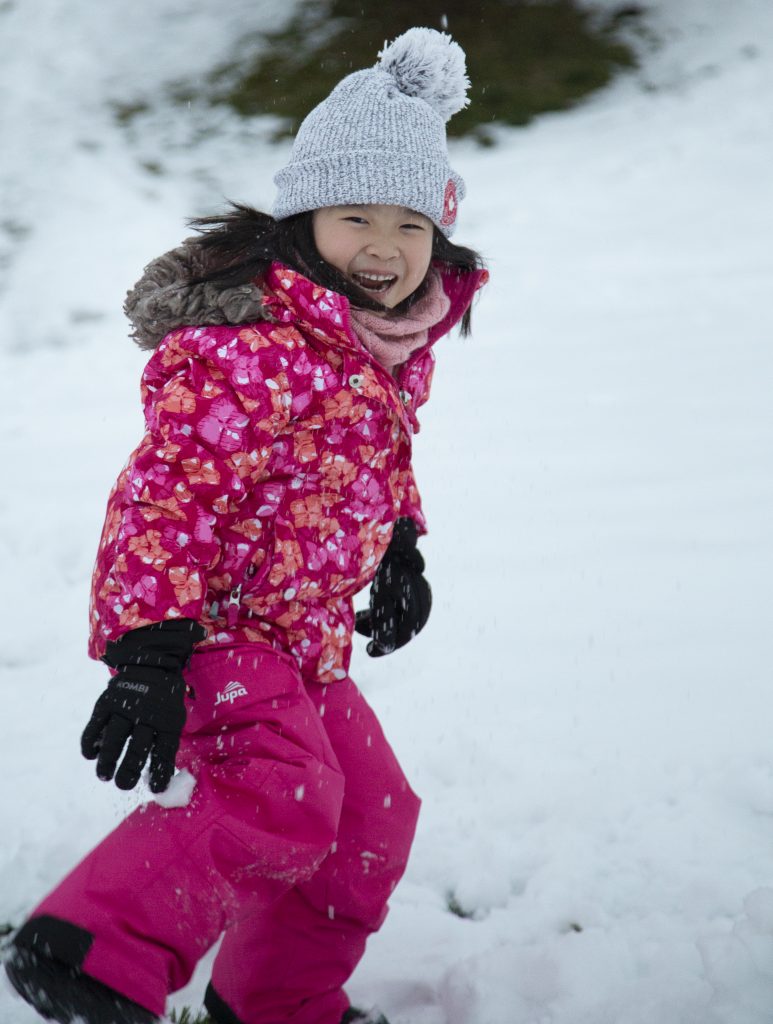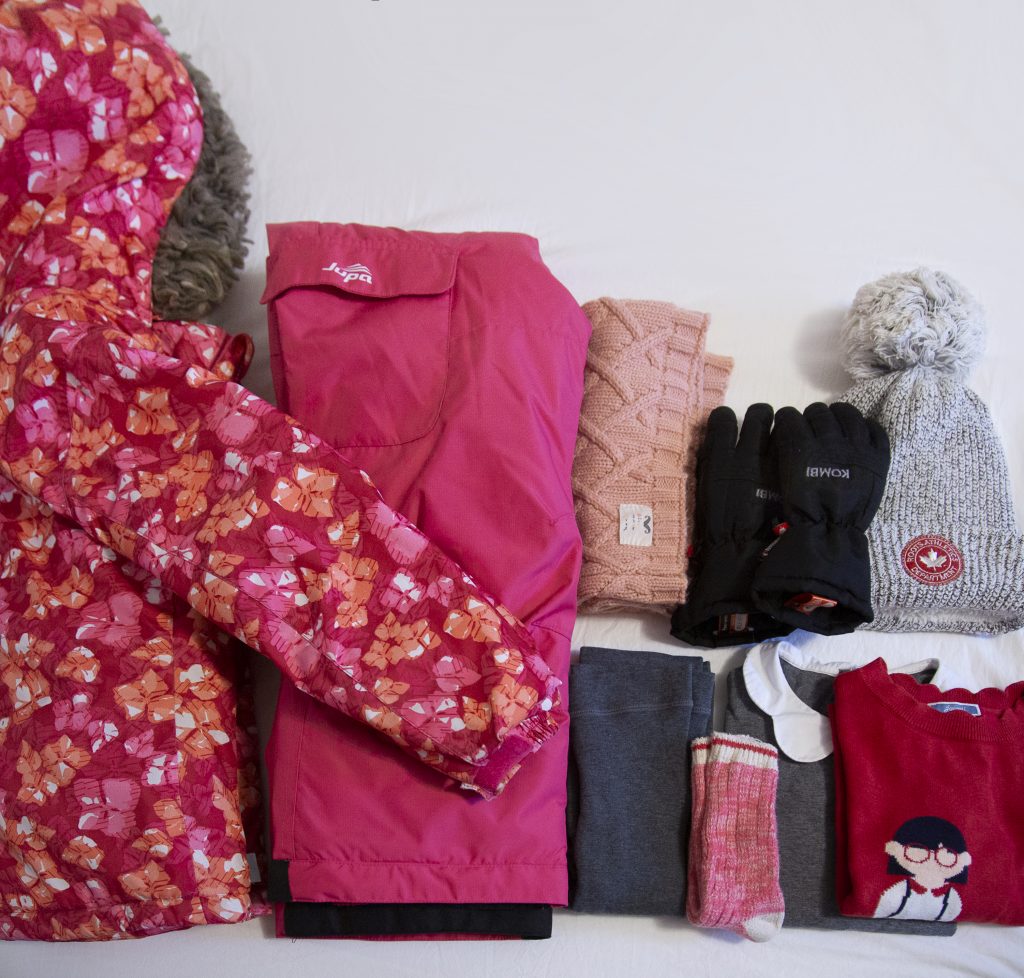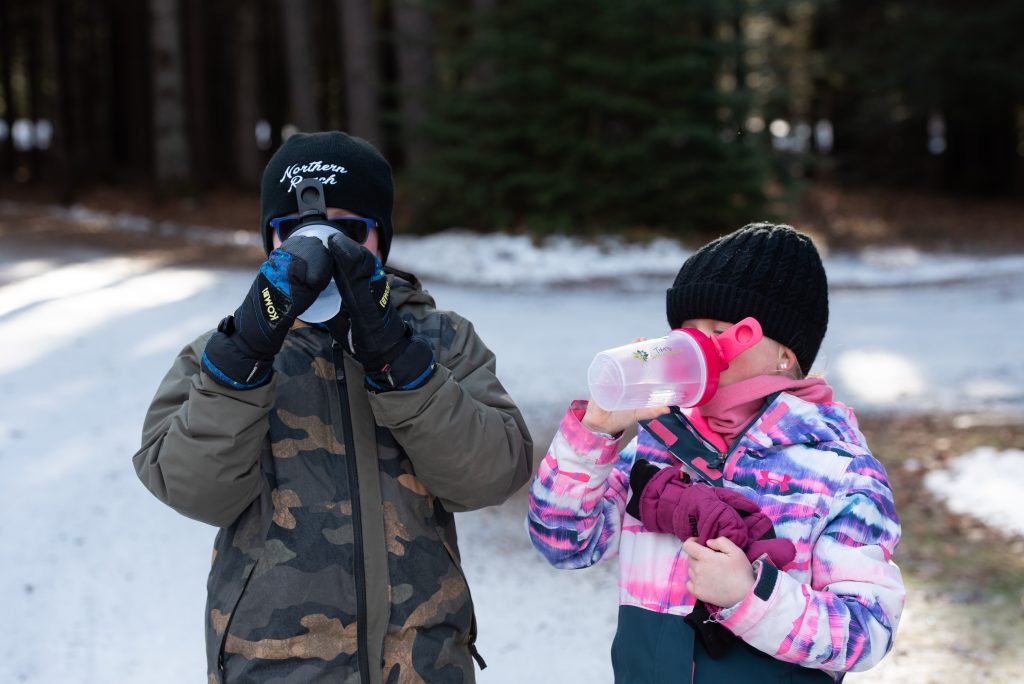Participating in outdoor winter activities will help keep the whole family healthy, but injuries can spoil the fun.
Safe weather
Children should play indoors if the temperature or the wind chill falls below -25 °C (-13 °F). At this temperature, exposed skin freezes in a few minutes.

Dress warmly
All winter activities require warm, dry clothing. Heat loss is particularly significant in children under three because their heads account for a larger proportion of their overall body size.
To help prevent frostbite, dress in warm clothes, including:
- A hat and clothing made of tightly woven fibres, such as wool, which trap warm air against the body.
- A few lighter layers protect better than one heavy garment. Try loose layers such as an absorbent synthetic fabric next to skin, a warmer middle layer and a water resistant/repellent outer layer.

- A single pair of socks, either wool or a wool blend (with silk or polypropylene), is better than cotton, which offers no insulation when wet. Avoid extra-thick socks as they can cause cold feet by restricting blood flow and air circulation around the toes.
- Tube-shaped neck warmers instead of scarves to avoid strangulation during play. If scarves must be used, tuck them into jackets.
- Boots that are dry and not too tight.
- Jackets that are zipped up.
- Hoods and jackets without drawstrings, as drawstrings are a safety hazard for children. Remove them or buy clothes without them.
Always make sure to do the following:

- Protect vulnerable areas such as fingers, toes, ears and nose.
- Get out of wet clothes and shoes as quickly as possible as these are the biggest factors in frostbite.
- Drink plenty of warm fluids to help the body maintain its temperature. If hot drinks are not available, drink plenty of plain water.
- Take frequent breaks from the cold to let bodies warm up.
- Use sunscreen, even on cloudy days.
Ice
Stay away from the banks of ponds, lakes, streams and rivers during the spring thaw. Beware of quick thaws that can weaken the ice surface.
Many factors affect ice thickness including:
- Type of water
- Location
- Time of year
- Water depth and size of body of water
- Currents, tides and other moving water
- Chemicals including salt
- Fluctuations in water levels
- Logs, rocks and docks absorbing heat from the sun
- Changing air temperature
- Shock waves from vehicles travelling on the ice
Ice colour
The colour of ice may be an indication of its strength.
- Clear blue ice is strongest.
- White opaque or snow ice is half as strong as blue ice. Opaque ice is formed by wet snow freezing on the ice.
- Grey ice is unsafe as it indicates the presence of water.
Ice thickness should be:
- 15 cm (6 inches) for walking or skating alone.
- 20 cm (8 inches) for skating parties or games.
- 25 cm (10 inches) for snowmobiles.
Stay off stormwater management ponds
The tips above regarding ice colour and thickness are meant only for natural bodies of water. While stormwater management ponds may look natural, the ice that forms on them is unstable and dangerous, and is never safe for winter recreation.